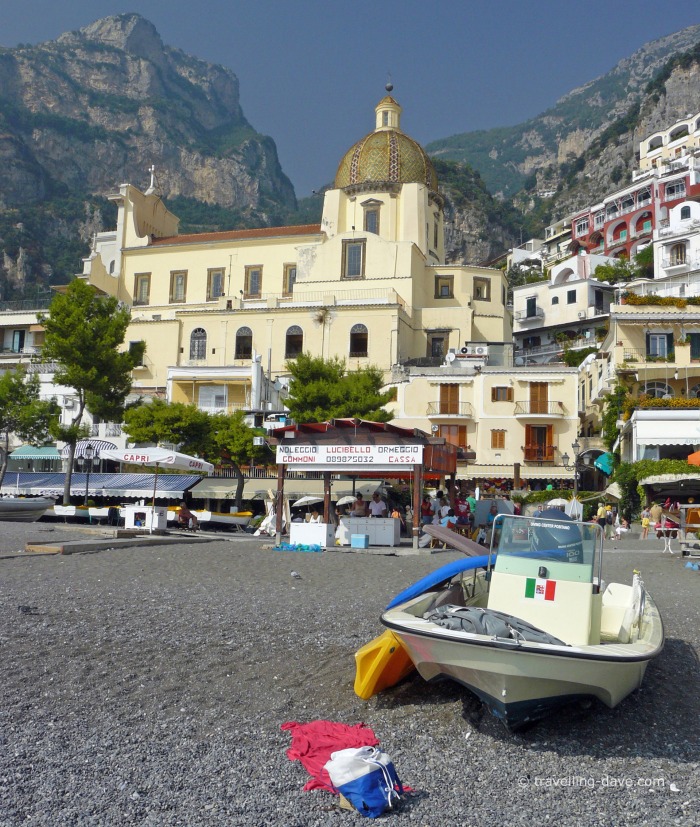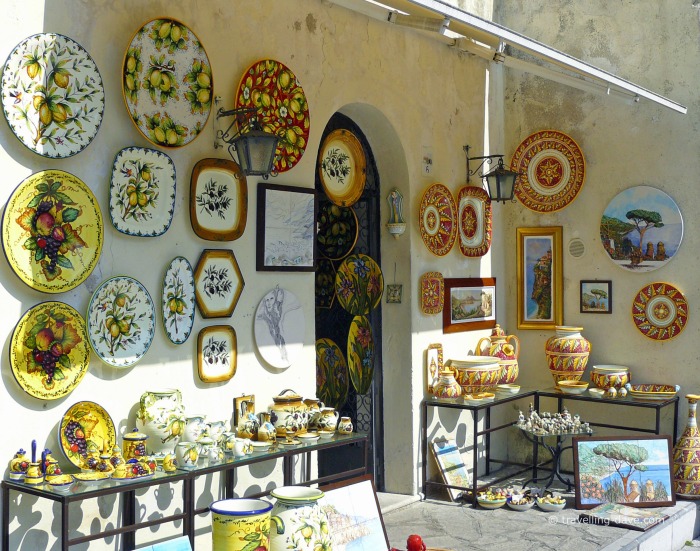Mention to anyone the Amalfi Coast and immediately images of villages on cliffs, sunny beaches and good Italian food come to mind! A stretch of land in the region of Campania in the South of Italy, the Amalfi Coast is one of the most popular holiday destinations in Italy. The international airport at Naples is the gateway for visitors flying to the region; from the airport, probably the best option to explore the area independently, is by renting a car; inexperienced drivers should skip this option as it can get quite scary in some areas to have to negotiate very narrow turns on the cliff side road with tourist coaches driving in the opposite direction on the only road available; another option would be to use local buses that run frequently between the villages, leaving the driving duties to someone else to concentrate on enjoying the views and taking pictures. A favorite way to see the Amalfi Coast from a different perspective is by boarding one of the boats connecting the main locations in the area.
There are many villages along the coast including the famous Positano and Amalfi but, before getting there, a stop at Pompeii it is a must on any trip to this part of Italy . The city, found buried under the ashes following the destructive eruption of Mount Vesuvius on the 24th of August 79 A.D, can be easily visited on foot. Pompeii has a beautiful amphitheater and many buildings still standing in the shadow of Mount Vesuvius; shops, houses and villas with colorful frescoes on the walls including the beautiful Villa of Mysteries on the outskirts of Pompeii can be visited. Particularly poignant are the casts of some residents of Pompeii frozen in time by the sudden eruption.
Back on the road, driving towards Sorrento, it is worth to stop at one of the many lookouts along the coast to admire the view of the Gulf of Naples with Mount Vesuvius in the background and, maybe catch a beautiful sunset at the end of a sunny day.
Sorrento can get quite busy so, if you are planning to stop here and have your own transport, it is probably better to look for a place to stay in one of the villages on the hills surrounding the town, Santa Agata sui Due Golfi being one of them; they still offer those beautiful views in much calmer settings, often in family run farmhouses, with homegrown products on their menus. And so, after a good breakfast, it is time to visit Positano: not only one of the most picturesque places in the world but, also an important destination for fashion-conscious visitors who want to splurge on the sartorial offerings in the village shops. Built on the face of a steep cliff, Positano is best explored on foot, climbing steps and walking down narrow alleys to get good views of the coast. The Church of Santa Maria Assunta in the center of town is a venue very popular for weddings, it overlooks the beach below known as Spiaggia Grande; around Positano there are plenty of cafes, restaurants and bars with tables outside, perfect spots to watch the world go by while enjoying an ice-cream or a granita.
Leaving Positano continuing along the coastal road past the village of Praiano, a photo stop at the road bridge over Furore should be made; here the sea has created a fjord with a popular beach accessed by steps on the side of the bridge. Despite its popularity, there is no official parking here and caution should be taken when stepping out of the car to take pictures of the beach below the bridge.
 It is short drive from Furore to Amalfi, one of the most famous towns along the coast. In summer, hordes of day trippers from cruise liners in the harbor fill the streets of the town keen to see the main attractions. Top of the list is Amalfi Cathedral, accessed from the main square by a beautiful staircase. Dedicated to the Apostle Saint Andrew, the church facade has beautiful mosaics. A visit inside includes a view of the main church, the adjacent Basilica of the Crucifixion, the cloister (Chiostro del Paradiso) and the crypt where the relics of Saint Andrews are kept.
It is short drive from Furore to Amalfi, one of the most famous towns along the coast. In summer, hordes of day trippers from cruise liners in the harbor fill the streets of the town keen to see the main attractions. Top of the list is Amalfi Cathedral, accessed from the main square by a beautiful staircase. Dedicated to the Apostle Saint Andrew, the church facade has beautiful mosaics. A visit inside includes a view of the main church, the adjacent Basilica of the Crucifixion, the cloister (Chiostro del Paradiso) and the crypt where the relics of Saint Andrews are kept.
Amalfi is also famous for its paper manufacturing and the Paper Museum found in the upper part of the town, about 10-15 minutes walk from the main square, is well worth a visit. Like the other villages along the coast, Amalfi is best explored by walking down the alleys away from the main square, climbing steps of the so-called “salita”, stopping at quirky shops found all around the village to stock up on local product (and Limoncello souvenir bottles!).
The next stop on any trip to the Amalfi Coast should be at Ravello. Away from the coast, the village is perched on rocks high above Amalfi. Ravello might be a small village but there are a number of interesting places to visit there, from the cathedral in the main square (Piazza Vescovado) to Villa Rufolo with its beautiful gardens set on a terrace overlooking the Amalfi Coast; the church below the gardens with the domes often seen in postcards and guidebooks promoting the Amalfi Coast, is the Church of the Annunciation. Ravello, and indeed all of the villages in the area, are famous for their ceramic production. Shops selling anything in ceramic, from a ceramic decorative tile to full sets of ceramic plates shipped all over the world, can be found here.
Back on the seaside the trip from Amalfi continues to the other villages along the coast like Atrani, Maiori, Minori all the way to Vietri sul Mare at the other end of the Amalfi Coast. Visitors staying in the area a bit longer can take this opportunity to visit the islands in the Gulf of Naples not too far away.






































What a gorgeous post. I’ve always wanted to visit Herculaneum and Pompeii and Amalfi too. I like your advice about straying from the main squares and seeking the quirkier shops.
LikeLike
Thank you Mandy. Yes, it’s always better to move away from the busy touristy areas to discover places without so many people around…and it’s good for pictures!
LikeLike